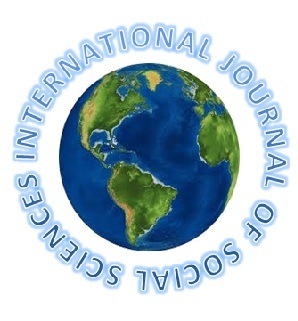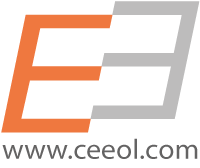
INTERNATIONAL JOURNAL OF SOCIAL SCIENCES
ISSN: 2548-0685 www.sobider.net
Guide for Authors
International Journal of Social Sciences (IJSS)
ISSN: 2548-0685 (Online)
DOI: 10.52096/usbd
Instructions for Authors
International Journal of Social Sciences (IJSS) is a double-blind peer-reviewed, international, multidisciplinary, social fields. IJSS aims to be a leading peer-reviewed platform and an authoritative source of information for analyses, reviews and evaluations related to social sciences and other relevant disciplines.
The primary target audience of the journal is researchers or practitioners.
The Journal provides a serious forum for publishing original contributions and comprehensive technical review articles of interdisciplinary and original research in related areas. IJSS is designed to provide a platform for academicians, researchers and practitioners who are interested in new knowledge in the field of social sciences.
As the Journal is international in scope, papers dealing with state-of-the-art developments in various nations, or comparative studies from several countries will be accepted. The journal publishes a wide range of original papers, critical reviews of recent research papers with significant research results and technical notes in related areas and their applications. IJSS is also willing to consider publishing selected high quality proceedings from a conference or a collection of papers dealing with a single topic.
All submitted articles should report original, previously unpublished research results, empirical or theoretical work, and case studies. The Journal follows a double-blind peer-review process, whereby authors do not know reviewers and vice versa. Peer review is fundamental to the scientific publication process and the dissemination of sound science.
Articles submitted to the journal should meet these criteria and must not be under consideration for publication elsewhere. Manuscript should follow the style of IJSS and are subject to both review and editing. English is the language of the journal and all articles submitted are in English.
Please read the Author Guidelines for detail information on how to prepare and submit an article.
Author Guidelines
The features and format required for the article to be published are as follows:
Original Research Article: The journal publishes original research articles, critical reviews of recent research articles with significant research results and technical notes in related areas and their applications. Original research article should include Title, Abstract, Method(s) and Materials, Results, Discussions, Conclusion, Suggestions, Acknowledgements and References.
Submission International Journal of Social Sciences (IJSS) receives all manuscript online through, only. Therefore, manuscripts must be submitted via the journal's online submission system. Our Manuscript system allows for rapid submission of original and revised manuscripts, as well as facilitating the review process and internal communication between authors, editors and reviewers via a web-based platform. Once you have prepared your manuscript according to the journal instructions please visit the online submission system.
Papers that are submitted to the IJSS for publication should not be under review at other journals (see Publication Ethics and Publication Malpractice). Submission of a manuscripts indicates that it reports unpublished work and that is not under active consideration for publication elsewhere, nor been accepted for publication, nor been published previously (except in abstract form).
Format: Manuscripts should be supplied in the following format: Times New Roman font, 12-point type, and 1.5 spaced. Allow margins of at least one inch (3 cm) on all sides of the typed pages. Number all manuscript pages consecutively. Manuscripts are not to exceed 16 pages, plus tables and figures for a total of 30 pages. Equations and symbols should be typed as well.
Language: Manuscripts should be in English. The manuscripts submitted to the journal should have a plain and clear language quality and should comply with the scientific literature and language rules. Manuscripts should be written in a fluent language away foreign words. During the review process for the manuscript submitted to International Journal of Social Sciences (IJSS) , the editorial board may request language editing.
Title: The title of the article should reflect the content clearly and be comprehensive. The title must be as brief as possible, 6 to 10 words.
Affiliation: On the title page, include full names of authors, positions, academic and/or other professional affiliations, and e-mail address of the author to whom proofs and correspondence should be sent. Authors are also requested to add their ORCID numbers.
Corresponding Author(s): Articles will be published with a correspondence email for the corresponding author.
Abstract: Abstract should not be more than 250 words. Avoid abbreviations, diagrams, and reference to the text.
Keywords: Authors must supply 3-5 alphabetized keywords or phrases that identify the most important subjects covered by the paper.
Jel Classification Code : Authors must add Jel Codes
Introduction: The basis of the research topic, summary related with the parts of the study, the significance of the subject in the academic literature, the importance of the study, research problem and aims should be explained in a detailed fashion in the introduction.
Subtitles: Subtitles should be numbered consecutively ( 1., 1.1., 1.2, 2., 2.1., 2.2. etc.).
Method: The type, research group, data collection tools, validity and reliability, data collection techniques, data analysis, limitations and ethical committee approval (if necessary) of the research should be explained exhaustively.
Results: The results of the study should be explained with tables, diagrams, graphics or pictures in a way that supports the aim(s) and problem(s) of the study.
Discussions: In the light of the importance of the study, the results should be discussed referring to literature and author(s) opinions.
Conclusion: In the conclusion, the main ideas driven from the discussions should be explained.
Suggestions: Suggestions that are suitable for the discussion and results of the study must be made. In addition, suggestions that can contribute to the literature and are related with future studies and applications in the field must be included.
Tables and Figures: Tables and figures should be numbered consecutively. Tables and figures are recommended for highest quality reproduction. Tables and figures should be presented within the article, not at the end of the study. The article will be published in black and white (print), although online version will contain the colorful figures (if any). However, the color print will be available in extreme cases as per the request of the author.
Acknowledgments/Declarations: Acknowledgements/declarations indicate at the end of the text before references any conflict of interest. This includes ownership of shares, consultancy, speaker's honoraria or research grants from public or private institutions with an interest in the topic of the paper. Acknowledgements/declarations must be complete and correct at the time of submission. Additions or deletions cannot be made at the proof stage. If the corresponding author wishes to add or delete sponsoring institutions or persons the paper must be withdrawn, corrected, and resubmitted for review.
References: Citations in the text are by author(s) and date in parentheses. References should be listed at the end of the main text. References should be arranged alphabetically and must conform to the APA Style. Please visit www.apastyle.org to learn more about APA style. Use of DOI of references is highly encouraged.
Appendices: Additional tables, graphics and pictures should be given on a separate page after the references. Each appendix should be numbered as Appendix 1, Appendix 2, … and each appendix should have a separate title.
Permission: Authors are responsible for obtaining permission to reproduce copyrighted material from other sources.
Page Proofs: All proofs must be corrected and returned to the publisher within 48 hours of receipt. If corrections are not returned within the allotted time, the Editor will proofread the article and it will be printed per his instruction. Only correction of typographical errors is permitted.
Manuscript Inquiries: If there are any questions about a manuscript, the Editor Office will only respond to written correspondence from the corresponding author of record. All inquiries from co-authors should go through the corresponding author. If you have any queries please contact the journal's Editorial Office: editorusbd@gmail.com
Requests or Complaints: If authors consider that a decision of rejection was incorrectly made, they can appeal the decision. To appeal a decision the authors should email the Editor-in-Chief stating why they think the decision was wrong. The appeal will be considered by a member of the Editorial Board who was not involved in the original decision.
If an author has a complaint against the journal or editors, s/he should contact directly to the Editor-in-Chief in the first instance. Where a resolution is not satisfactory it will be passed to the management SD Publishing House for resolution.
If you have any other requests or complaints please contact the journal's Editorial Office: editorusbd@gmail.com
Editorial Process (Peer Review)
Quality Control System (Peer Review)
All papers published in the journal are subject to quality control system (peer review). Peer review is fundamental to the scientific publication process and the dissemination of sound science. All manuscripts submitted to IJSS are reviewed according to the steps below:
Review Method
The Journal follows a double-blind peer-review process, whereby authors do not know reviewers and vice versa. Double-blinde peer review is a method used to make sure scientific publications are produced with the highest quality. Appropriate papers are sent to independent reviewers for evaluation. Reviewers, receive author’s article with no mention of their identity including their work and ethnicity. The authors as well are not informed about the reviewers’ identity.
Pre-review
At this step, each submission is checked for appropriateness when received by the editorial office.
In the pre-review step, the submission is evaluated the introduction and literature, method, findings, results, discussion parts of the studies in detail with respect to the journal policies, and aims and scope of the journal as well as originality. If a submission is outside the aims and scope of the journal, does not comply with the guidelines, weak in terms of language and wording, lack originality, contain critical scientific mistakes, is obviously of insufficient quality, or is missing important sections will be rejected without review by the Editor.
Assigning Reviewers
The journal invites members of the Editorial Board as well as external experts to review each article deemed eligible for consideration. Reviewers are assigned according to the content of the studies and their subject of expertise.
Authors are encouraged to recommend suitable reviewers, but the Editor-in-Chief and the editorial office reserve the right to select different reviewers. The reason for asking authors to recommend reviewers is that they know best who is an expert in this field. In addition, the suggested reviewers may be suitable for other articles on the same subject. Therefore, obtaining these names can help the editorial office to ensure that it is approaching appropriate people to review all articles.
The recommendations are then evaluated by the editors and the studies are passed on to the reviewers who are obligated to guarantee that they will not share any document or detail about the study they review.
Reviewing Process
Reviewers are given 2-4 weeks for review. Authors are required to complete the aditing of their works within one month at the latest, taking into account the reports of the reviewers. Reviewers may request more than one editing of a study if they deem it necessary.
In the review process, reviewers are not expected to edit the study.
Reviewer Reports
In general, the reviewer reports are based on the originality of the studies, methods, ethical considerations, consistent presentation of the findings and results and analysis of the studies with respect to literature.
Reviewers advise on the originality and merit of the paper; the editors decide on publication.
Final Decision
The publication decision is made by the Editor-in-Chief after receiving two external reviewer reports with recommendations.
Based on the review done by the field editor and reviewers, the Editor-in-Chief will make a decision of (1) accept, (2) minor revision, (3) major revision, (4) minor and major revision or (5) reject. The reasons for the decision will be communicated to the authors. In this step the studies that are not accepted for publication are returned without request for plagiarism detection. The final decision about the accepted studies is made based on the results of the plagiarism detection report.
The Editor-in-Chief reserves the right to reject the article when a minor/major revision decision is made and the authors do not revise their articles sufficiently after receiving the reviewer reports. Once revised articles are received, they will be submitted for further review or the Editor-in-Chief will make a decision based on the level of revision requested.
In this process the studies that are not accepted for publication are returned without request for plagiarism detection. The final decision about the accepted studies is made based on the results of the plagiarism detection report.
Plagiarism Detection
In accordance with its publishing policies, the IJSS obliges to detect plagiarism for any study that has passed the review process in order to protect the integrity of the study. Therefore, the work is detected as plagiarism by a company chosen by the editorial board. The resulting fees are paid by the authors.
The plagiarism detection is done with Turnitin software. After the plagiarism detection, the matches found in each study are analyzed in detail and the matches with the correct reference and cross-reference are listed. The authors may be asked to correct the mistakes in the report or the study may be returned to the authors.
System Notification
Based on the review done by the reviewers and plagiarism detection report, the editorial office reports the final decision of the editorial board to the authors within one week at the latest along with the suggestions made by the reviewers.
Editing and Revision
The authors are responsible for doing timely, complete and explanatory editing and revision to the study with an understanding that all the recommendations made by the journal are objective and improving the quality of the study.
Assigning a DOI Number
After the final decision, system notification, and editing and revision the manuscripts which are ready for publication are given a DOI number by the Editorial Office.
Review and Decision-making Time
Review and decision-making time is highly variable, as it is sometimes difficult to find suitable reviewers and there may be delays in receiving reviewer reports. The Editor-in-Chief and the editorial office make every effort to minimize the time from submission to first decision. The journal aims to make its first decision (after review) within 6-8 weeks.
Appeal a Decision
If an author considers that a decision of rejection has been made incorrectly, s/he can appeal the decision. To appeal a decision the author should email the Editor-in-Chief stating why they think the decision was wrong. The appeal will be considered by a member of the Editorial Board who was not involved in the original decision. There is only one chance to appeal, so it is very important that the authors clearly explain the reason for the appeal.
Conflicts of Interest
A conflict of interest is defined as a situation where personal relationships (e.g. friend, colleague or family), business relationships (e.g. working in a competing company), or financial influences (e.g. funding) will affect the judgement of any person during the publication of the journal.
All manuscripts for articles, original research reports, editorials, comments, reviews, book reviews, and letters that are submitted to the journal must be accompanied by a conflict of interest disclosure statement or a declaration by the authors that they do not have any conflicts of interest to declare. Difficult cases will be referred to the Committee on Publishing Ethics (COPE) for advice.
Authors are required to declare (within the article and to the Editor-in-Chief) any COI that may have affected their research (e.g. funding) or decision to submit to the journal.
Authorship: Anyone identified as an author must have made a substantial intellectual contribution to the conception or design of the work; or the acquisition, analysis, or interpretation of data for the work. Authors must be willing to take a shared responsibility in the research and in the article and approve the final version to be published. Authors must agree to be accountable for all aspects of the work in ensuring that questions regarding the accuracy or integrity of any part of the work are appropriately investigated and resolved.
Anyone who does not meet the criteria stated above but who contributed to the research or the writing of the article should be acknowledged and thanked in the "Acknowledgements" section at the end of the article.
In addition to being accountable for the parts of the work s/he has done, an author should be able to identify which co-authors are responsible for specific other parts of the work. In addition, authors should have confidence in the integrity of the contributions of their co-authors.
Any changes in authorship during the peer review process or after acceptance must be confirmed by all named authors and the Editor-in-Chief must be notified of any reason for addition/removal.
Author Responsibilities: Authors are required to declare (within the article and to the Editor-in-Chief) any conflict of interest that may have affected their research (e.g. funding) or decision to submit to the journal. The corresponding author must ensure that all co-authors agree with the author list and technical content before submitting the manuscript. The corresponding author is responsible for the completeness and accuracy of the manuscript at the time of submission. Author names and affiliations must be competed and correct at the time of paper submission. While corrections can be made at the proof stage for authors who have changed institutions since the time of paper acceptance, author names cannot be added or deleted at the proof stage. If the corresponding author wishes to add or delete authors the paper must be withdrawn, corrected, and resubmitted for review.
Reviewers: Reviewers are required to declare if they have any conflict of interest that may affect their judgement of any article they review. The conflict of interest may not prevent them reviewing the article, but must be declared to the Editor-in-Chief as soon as it is known.
Editors: Editors are excluded from any publishing decision in which they may have a conflict of interest. For example, if an article by a colleague of the Editor-in-Chief is submitted to the journal, the peer review and all editorial decisions will managed by another editor.
Telif Hakkı ve Yazar Sözleşmesi
ULUSLARARASI SOSYAL BİLİMLER DERGİSİ YAZIM KURALLARI
1. Uluslararası Sosyal Bilimleri Dergisi, “Hakemli Dergi” statüsünde, yılda en az 2 sayı olarak yayımlanır.
2. Dergiye gönderilen makaleler başka bir yerde yayımlanmamış veya yayımlanmak üzere gönderilmemiş olmalıdır.
3. Makaleler; “Microsoft Word” programında hazırlanmış olmalıdır. Ana metin Times New Roman-12 punto- normal stil; dipnotlar Times New Roman-10 punto normal stil olarak hazırlanmış olmalı, CD veya elektronik posta ile editöre gönderilmelidir.
4. Derginin yazı dili esas olarak Türkçe olmakla birlikte, dergide İngilizce ve Arapça gibi dillerde makalelere de yer verilmektedir.
5. Dergiye gönderilen makalelerin başına, en az 100 en çok 200 kelimeden oluşan özetler ve özetlerin yazıldığı dillerde başlık ve anahtar kelimeler eklenmelidir. Türkçe yazılan makaleler için Türkçe özete ek olarak, İngilizce özet eklenmesi, İngilizce yazılan makaleler için ise, Türkçe özetlerin eklenmesi gerekmektedir. Özetler ve anahtar kelimeler Times New Roman, 10 punto olmalıdır.
6. Makalelerde yazar adları, yazarın çalıştığı kurum bilgileri ve elektronik posta adresleri açık ve doğru bir şekilde belirtilmelidir.
7. Yazarların gönderdiği makaleler Editör Kurulu tarafından yapılan ön incelemeden sonra, bilimsellik ölçütleri ve dergi yazım kuralları yönünden uygun bulunduğu takdirde yazar adları metinden çıkarılarak hakemlere gönderilir. Hakem raporunda düzeltme istenmesi durumunda yazar, sadece belirtilen düzeltmeler çerçevesinde değişiklikler yapabilir. Hakem raporunun olumsuz olması durumunda, üçüncü bir hakeme incelemesi için gönderilir. Yayımlanmayan yazılar, yazarına geri gönderilmez. Yazara durum hakkında bilgi verilir.
8. Makaleler yayımlanmak üzere kabul edildiği takdirde, tüm yayım hakları Uluslararası Sosyal Bilimler Dergisi'ne ait olur. Yazarlar telif haklarını Uluslararası Sosyal Bilimler Dergisi 'ne devretmiş sayılır, yazara ayrıca telif ücreti ödenmez.
9. Başlığın ilk harfleri büyük yazılmalı, Times New Roman, 12 punto olmalıdır. Yazar adı küçük, soyadı büyük harflerle yazılmalıdır.
10. Metin içinde göndermeler ad, basım yılı ve sayfa numarası olarak parantez içinde belirtilmelidir. Tek yazarlı çalışmalar (Şahin, 2011: 325); iki yazarlı çalışmalar (Yavuz, Ceylan, 2003: 112); üç ve daha çok yazarlı çalışmalar (Sander vd., 2012: 125); İngilizce çalışmalar (Carson, et al., 2010: 147) şeklinde gösterilmelidir.
11. Kenar boşlukları; üst kenar: 3 cm; sağ, sol, alt kenar: 2,5 cm olmalıdır.
12. Metin satır aralığı: 1,5; metin paragraf aralığı: önce: 0 nk, sonra 6 nk olmalıdır. Paragraf girintisi olmayacaktır.
13. Makalenin sonunda, makalede yararlanılan çalışmaların listelendiği kaynakça yer almalıdır. Yararlanılan kaynaklar metin sonunda kaynaklar bölümünde Times New Roman, 12 punto ve yazar soyadı sıralamasına göre alfabetik olarak ve küçük yazılmalıdır.
14. Kaynakların yazımı aşağıdaki örneklere uygun olmalıdır:
Kitap: Yazarın soyadı, adının baş harfi, tarih, kitabın adı, yayınevi, yayın yeri ve toplam sayfa sayısı.
COHEN, J., 1977. Statistical Power Analysis For The Behavioral Sciences, 2.Ed., Academic Press, New York, 255s.
Makale: Yazarın soyadı, adının baş harfi, tarih, “makale başlığı”, derginin adı, derginin cilt ve sayısı (sayı parantez içinde verilmelidir) ile başlangıç ve bitiş sayfaları.
ERDEM, Ş., 1997. "Mali Piyasalarda Sistem Riski, Politika ve Önlemler", Hacettepe Üniversitesi İİBF Dergisi, 15 (2), ss. 61-70.
Gazete Makalesi:
SMITH, A., 1982. "Study Finds Free Care Used More", APA Monitor,15 Nisan, s. 14.
Gazete Haberi: Gazete ismi, Yıl. “Haber Başlığı”, 15 Nisan, s. 5.
Kurultay ya da Sempozyum Bildiri Kitapları: Yazar soyadı, Adının baş harfi, Yayın tarihi, "Bildiri/makale başlığı", Yayına hazırlayanın adı, Kurultay ya da sempozyum (kitabı) başlığı, Sayfa no, Yayınlandığı yer: Yayınlayan kurum, ss....
Tezler: Yazar Soyadı, Adının ilk harfi., Yayın tarihi, "Tezin başlığı"; Tezin türü (Yüksek Lisans, Doktora, Sanatta Yeterlik), Sunulduğu Üniversite ve Enstitü, Yer adı.
GÖMLEKSİZ, M., 1993. "Kubaşık Öğrenme Yöntemi İle Geleneksel Demokratik Tutumlar ve Erişiye Etkisi", Doktora Tezi, Çukurova Üniversitesi Sosyal Bilimler Enstitüsü, Adana.
Internet Kaynakları: Yazar Soyadı, Adının ilk harfi., orijinal kaynağın tarihi. "Makale Adı", Makalenin orijinal kaynağı, sayfa sayıları, Bulunduğu URL adresi (ziyaret tarihi).
HIRO, D., 1998. “Politics Lebanon: Lebanese Voting Again”, IPS World News, 17-25, http://www.oneworld.org/ips2 (10.02.2000).
Bir yazarın aynı yılda yayınlanmış birden fazla yayını: Tarihlerin yanına a ve b gibi harfler konularak gösterilmelidir.
GÖKÇEN, S., 1982a. Haymana Bölgesinin Jeolojisi, HÜ Doçentlik Tezi, Ankara, 192s (yayınlanmamış).
________, 1982b. "Haymana Güneyinin Sedimantolojisi", Yer Bilimleri, 5(3), ss. 100-118.









